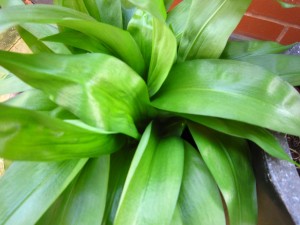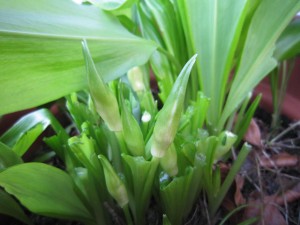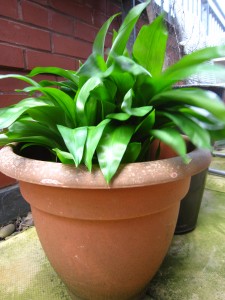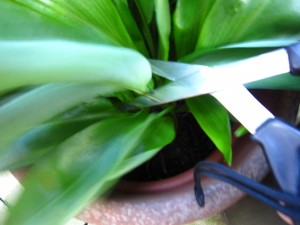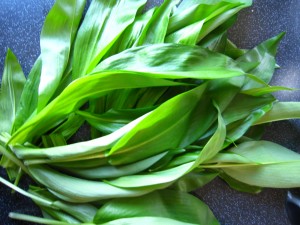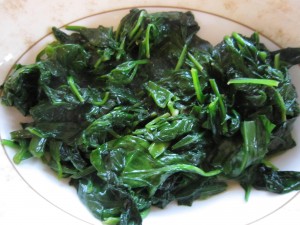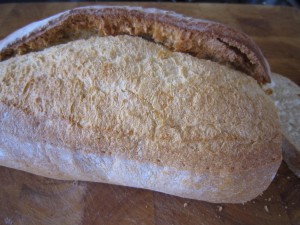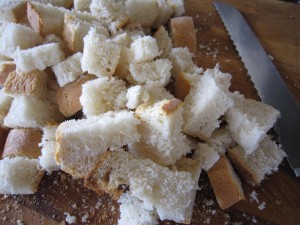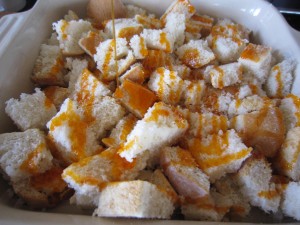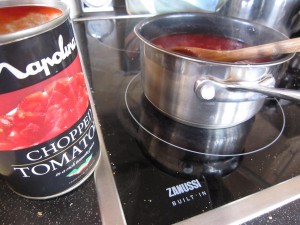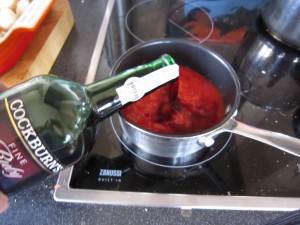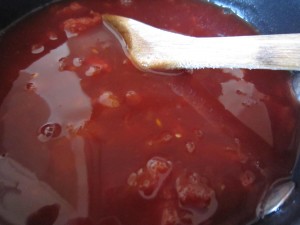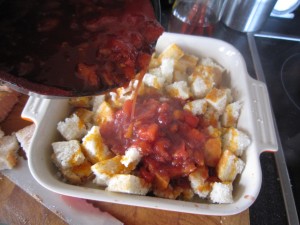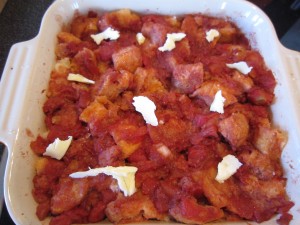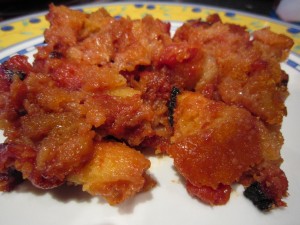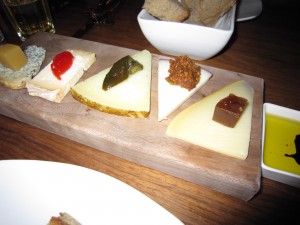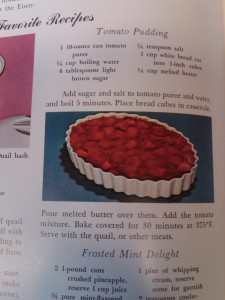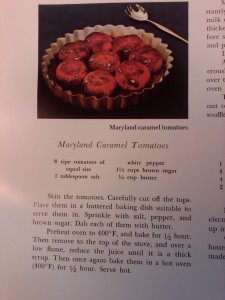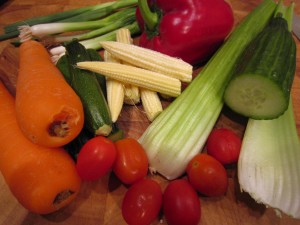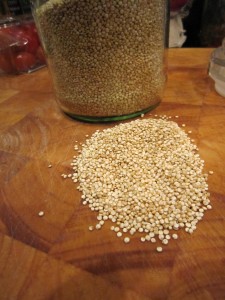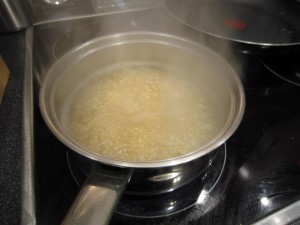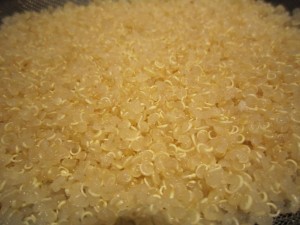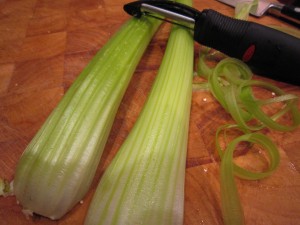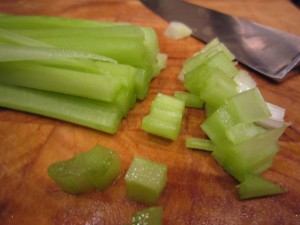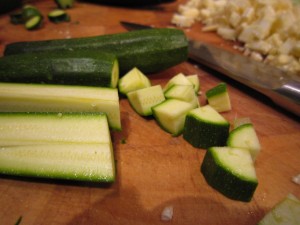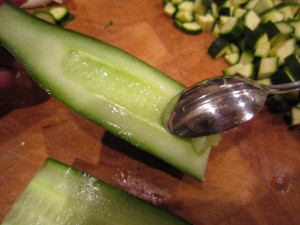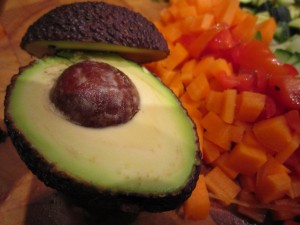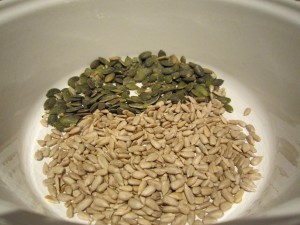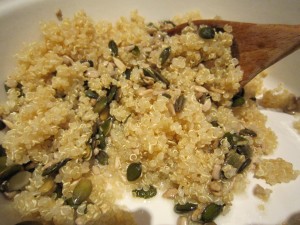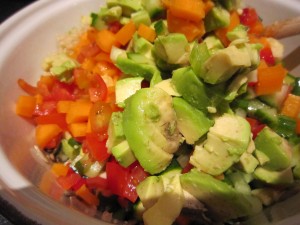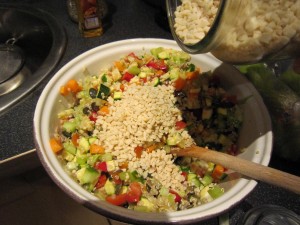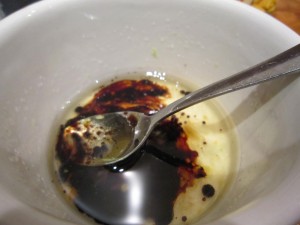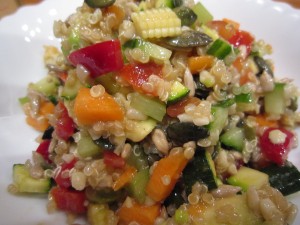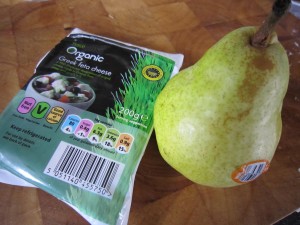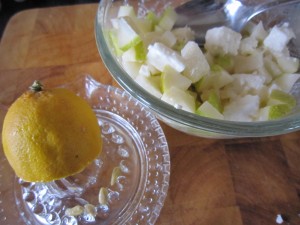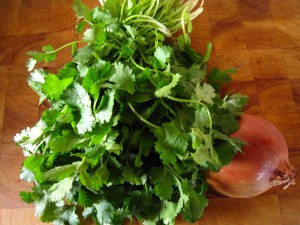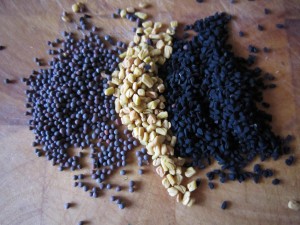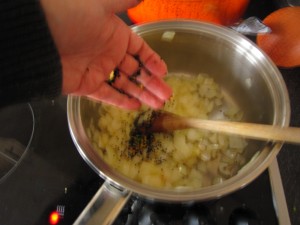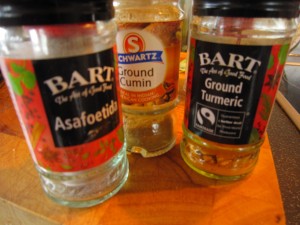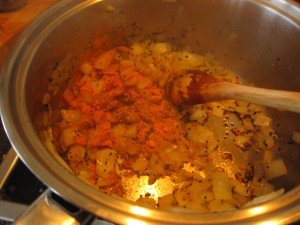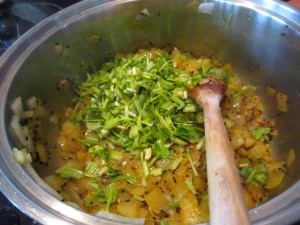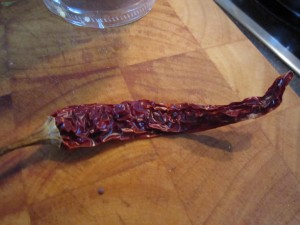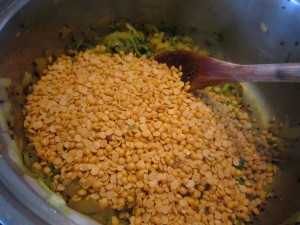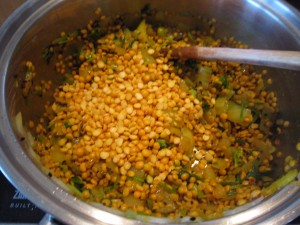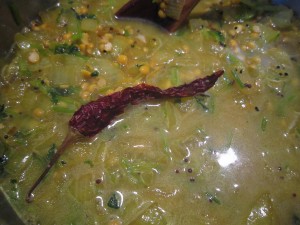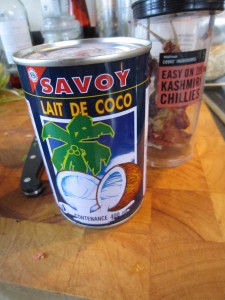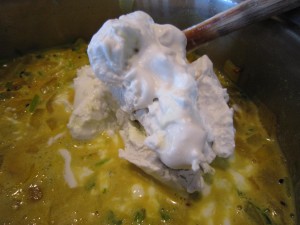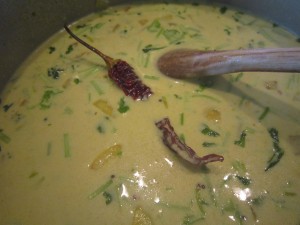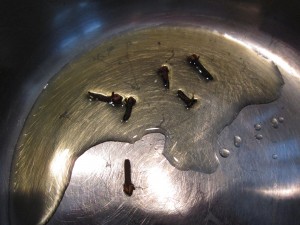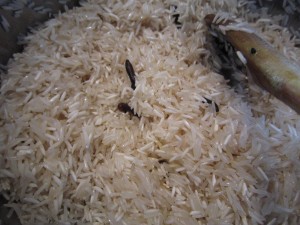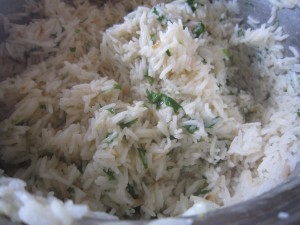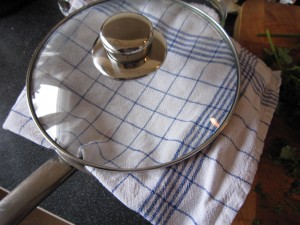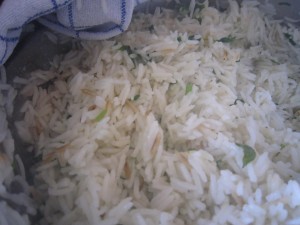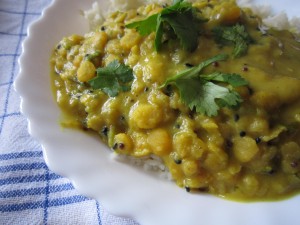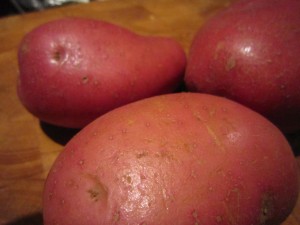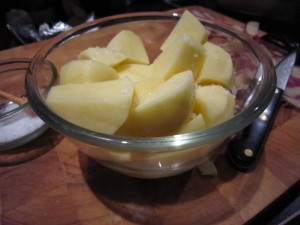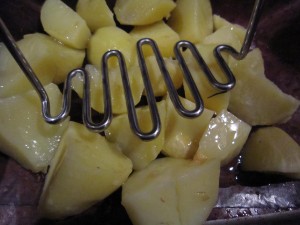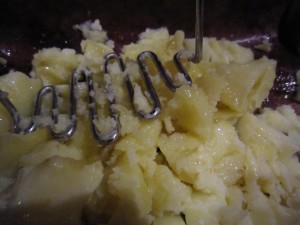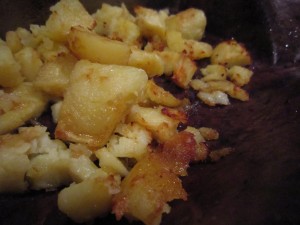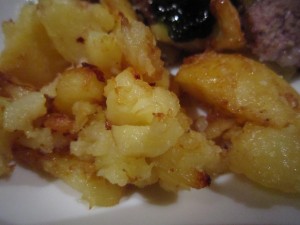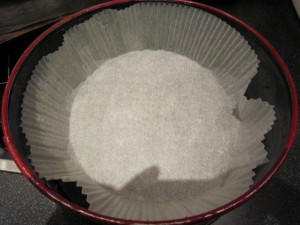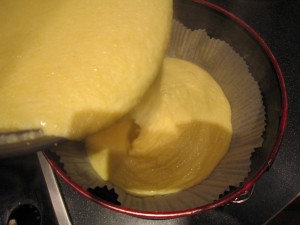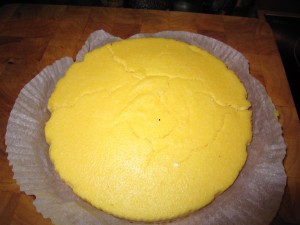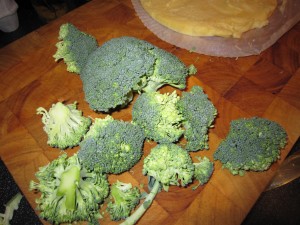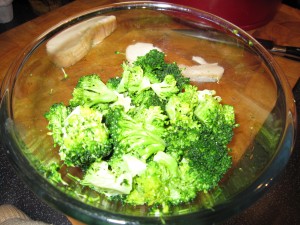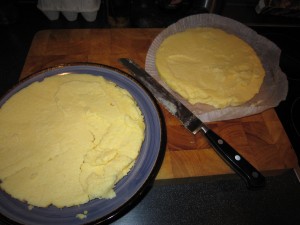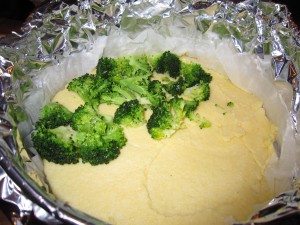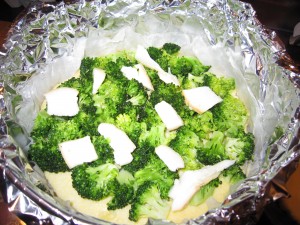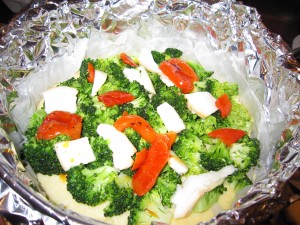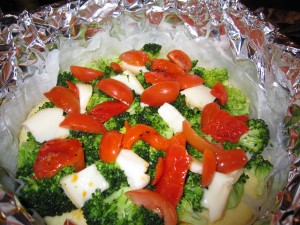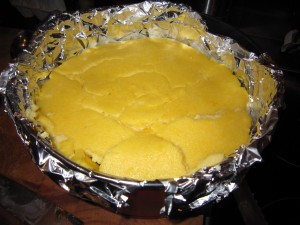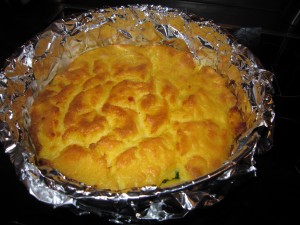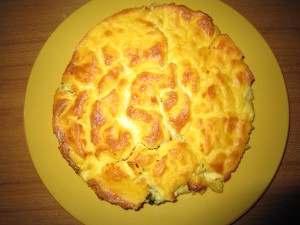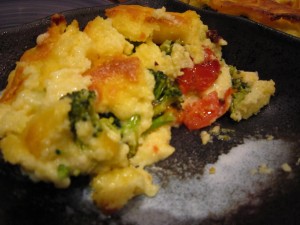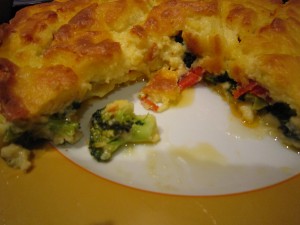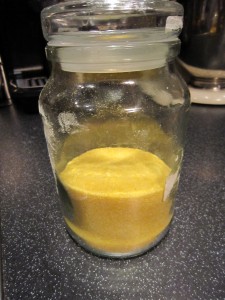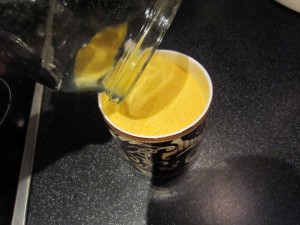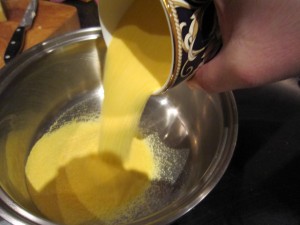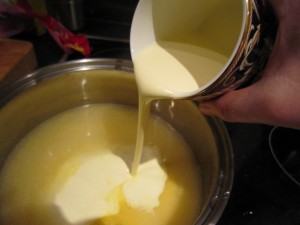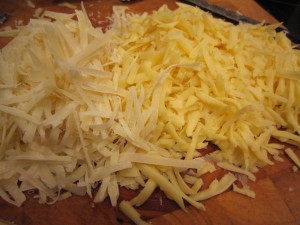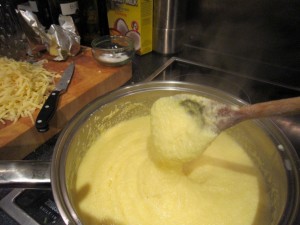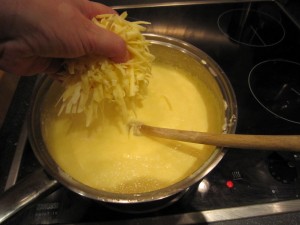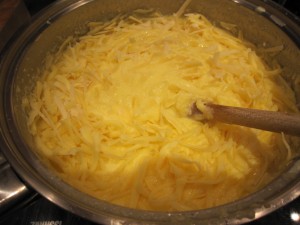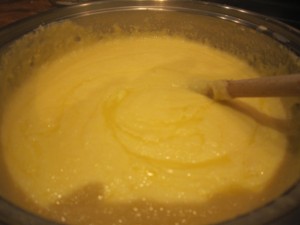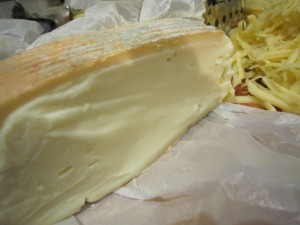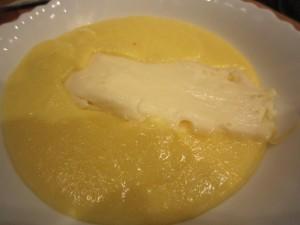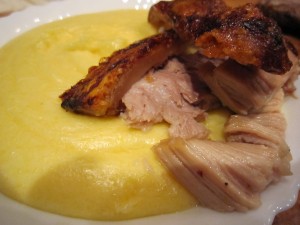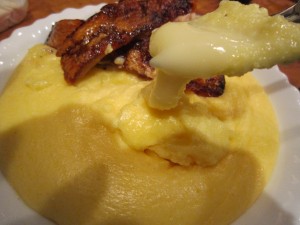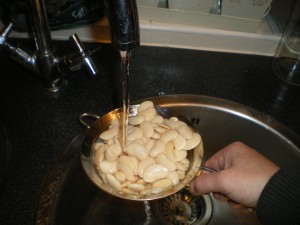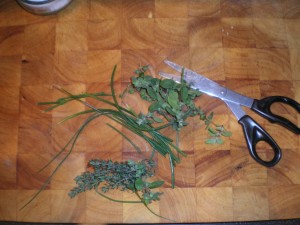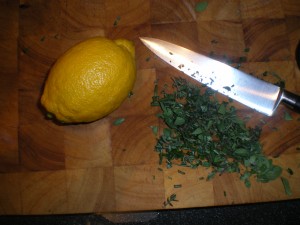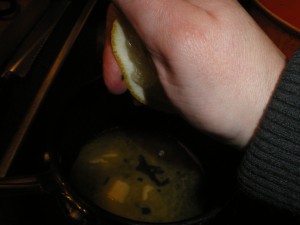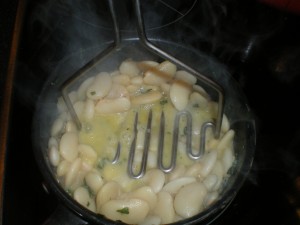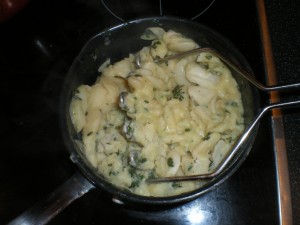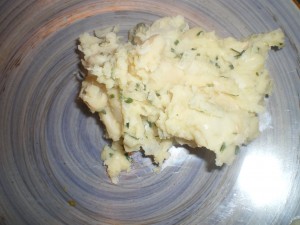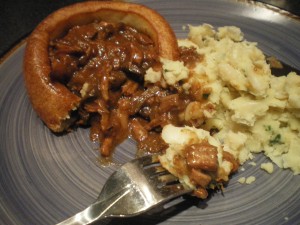Well then. What’s a girl to do when she claps eyes on one of these?
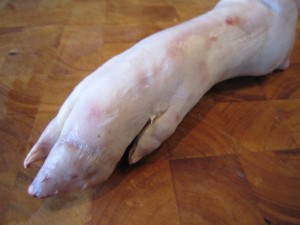
A little porky trotter.
Well, if she is a cunning and cost concious cook and she also claps eyes on walloping great ham shanks
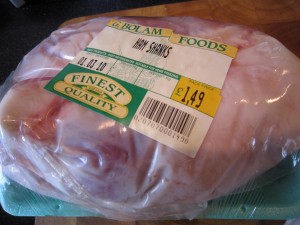
costing a mere £1.49, well then, the odds are that she starts to think of a delicious ham hock terrine, flecked with parsley and glistening with a soft and tasty jelly, just waiting to be eaten on some lovely No-Knead Bread…. perfect for a lovely light lunch or supper.
All you need are some ham shanks, a trotter (though if you can’t get one, you can use leaf gelatine – easy as anything – and I’ll tell you about that later)
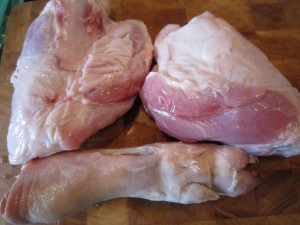
A lovely big bunch of parsley and maybe some gherkins to chop through it later
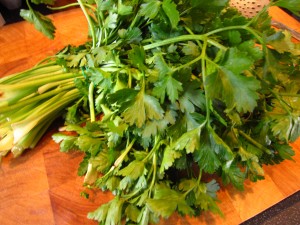 and a couple of carrots and an onion for the stock and a scattering of peppercorns
and a couple of carrots and an onion for the stock and a scattering of peppercorns
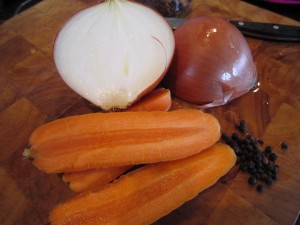
How simple a list of ingredients is that?
So first of all, rinse off your assorted bits of meat and pop them into the biggest pot you have (and really, don’t let that pig’s trotter worry you or put you off. It’s the traditional way to get a lovely jelly but if you can’t find one, or if you can’t face it, just relax. You can add leaf gelatine later)
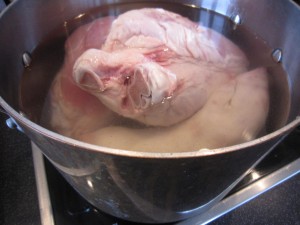
You need to bring the pot up to a boil for a few minutes – this loosens all the impurities and brings them to the surface as a dirty foam.
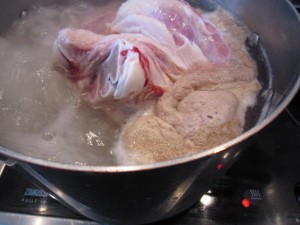
See? Get that scooped off and then empty the water out.
Refill the pan with fresh water and start it boiling again, but now add the halved onion (no need to peel it) and a couple of carrots and a handful of peppercorns
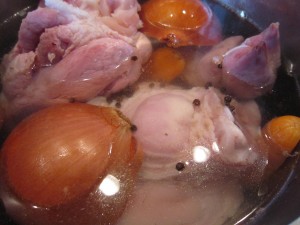
Bring everything to the boil and then turn the heat right down and let everything simmer away for couple of hours.
Check, occasionally, how soft and tender the meat is.
You are going to tear the meat into shreds for the terrine so you need it all to be cooked to sheer perfect tenderness.
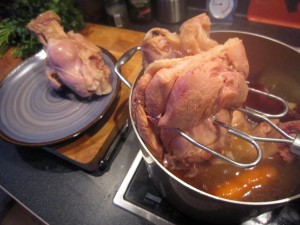
See how soft and tender the meat looks? Just hook the shanks out and put them on a plate to cool.
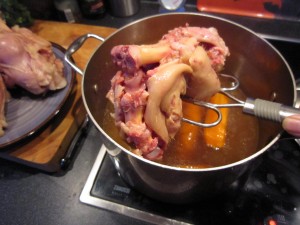
Take out the trotter too – look at how that is all falling apart… it has almost dissolved, giving up all of the lovely gelatine you will need to set the terrine later. There’s not much meat to pick through there, so don’t worry if you haven’t added a trotter. It really has done its job so you can throw that away now.
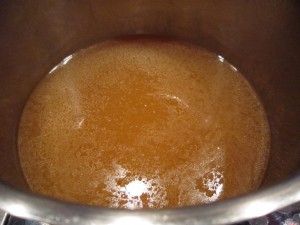
Sieve the pan of stock of its vegetables and you are left with a pan of rich and flavoursome stock. This is going to form the jelly that enrobes the ham so you want it to be as tasty as possible.
The next thing to do is to boil it down, removing more of the water and concentrating the stock.
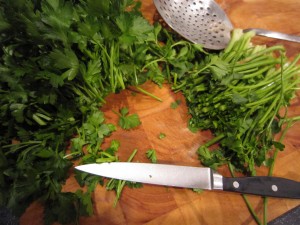
Because the jelly is also going to have parsley running through it, I thought I might as well add the parsley stalks to the final boil down, just giving it an extra depth of flavour. Let the stock reduce some more then turn off the heat, sieve the parsley stalks out and let the stock cool.
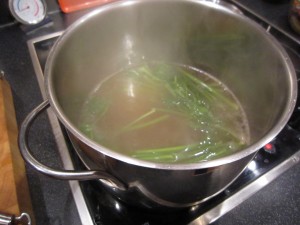
If you haven’t used a pig’s trotter, after you have sieved the stock, get a sheet of leaf gelatine and soften it, first of all, in some cold water. When it is all soft and slippery, add it to the stock and stir it round. It will dissolve almost instantly. Now leave the stock to cool down.
While that is going on and the meat is also cooling down (well, you don’t want to burn your fingers when you are stripping the hocks, do you?) you need to prepare the terrine.
I bought that lovely Le Creuset terrine at Christmas and used it, first of all, to bake a baguette in and I swore then that I would get cracking on a terrine. It’s taken me all this time to get around to it.
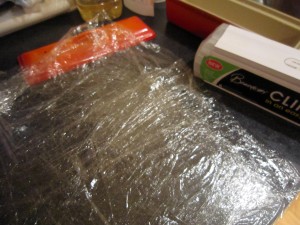
Anyway, the thing to do is to make a liner and the easiest way to do it, is with good old cling film. Lay out sheets of cling film on the bench so you have three layers and then, after rinsing out the terrine dish with water (so everything comes out easily later and it is easy to adjust the cling film), lay the film inside the pot
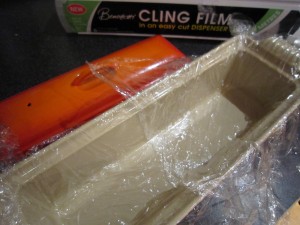
Right then… back to the meat.
By now it will be cool enough to handle and you can start to shred the meat into pieces.
Because it has cooled, the fat will have set so you can make sure that you can leave that behind as well as the skin and the tendony-gristley bits. (Don’t squirm!)
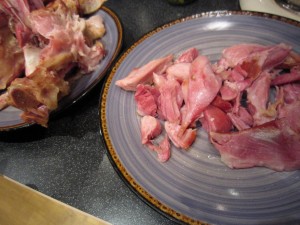
Two ham shanks will give you a really big plateful of tender, delicious, juicy meat
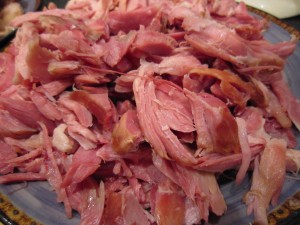
Now, meat alone is very good but you really need something to sharpen it all up and this is where some lovely little gherkins transform this into the perfect dish
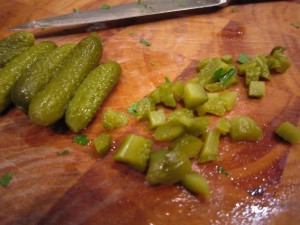
Chop them into little cubes so that when they mix with the meat and the parsley and the jelly they give you little bites of sharpness.
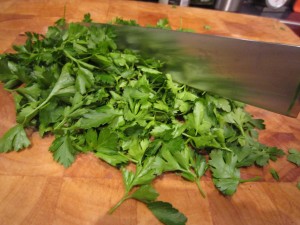
And the parsley? You used the stalks to add to the stock, now chop the leaves (and just the leaves, so strip them carefully)
Put the meat, the gherkins and the parsley into a big bowl and mix everything so you have an even distribution of all the ingredients
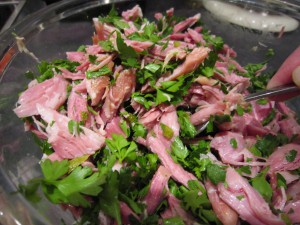
Now, it’s just a matter of putting everything together.
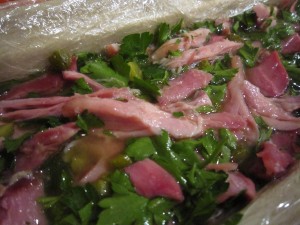
Pack in the meat and parsley/gherkin mix and then slowly pour in the cooled stock.
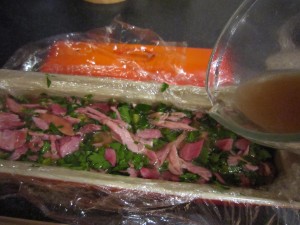
I say do it slowly because you need it to seep in and around the meat so everything holds together when it is set. Just pour it in till the stock just covers the meat.
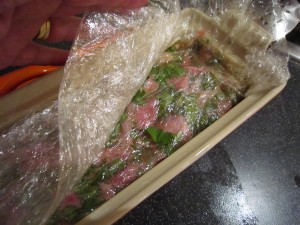
Then fold over the edges of the cling film
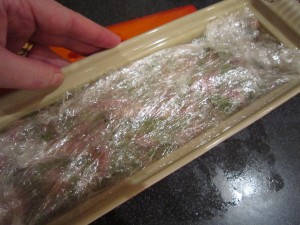
See? A lovely neat parcel. And that’s it. It just needs to set now.
Now, you can make a lid to fit, by cutting cardboard and covering it with clingfilm and lying it on top of the meat. This makes it easy to press down on the terrine and helps it set tight… thing is, this was so packed with meat that once I covered the top with cling film and pressed down lightly, I realised that it was already packed tight.
So all I did was put it in the fridge to set over night…
The next day, planning a lovely light lunch for The Bear and myself, I took out the chilled and now solid terrine.
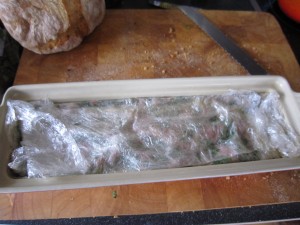
The cling film made it easy to lift out the terrine
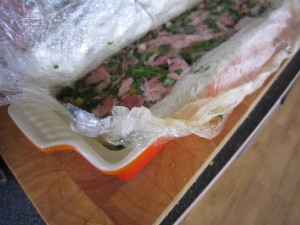
You just get hold of the extra film and lift….. and then pop it onto a plate
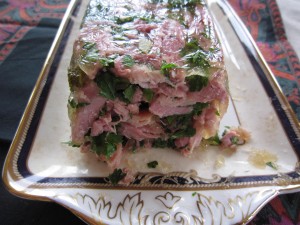
How beautiful is that?
The gorgeous pink, juicy meat with leaves of lovely parsley and little nuggets of gherkin all in a lovely, savoury, light jelly….
Just the thing with some lightly toasted bread, some salad leaves and a dab of parsley mayonnaise.
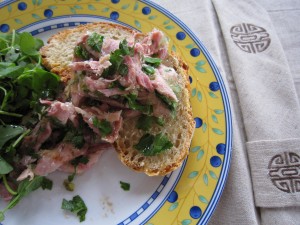
So, the next time you spot some ham shanks and maybe a pig’s trotter and only about £3.20 in your purse, do you think you might just think of making a delicious terrine?
Share on Facebook
